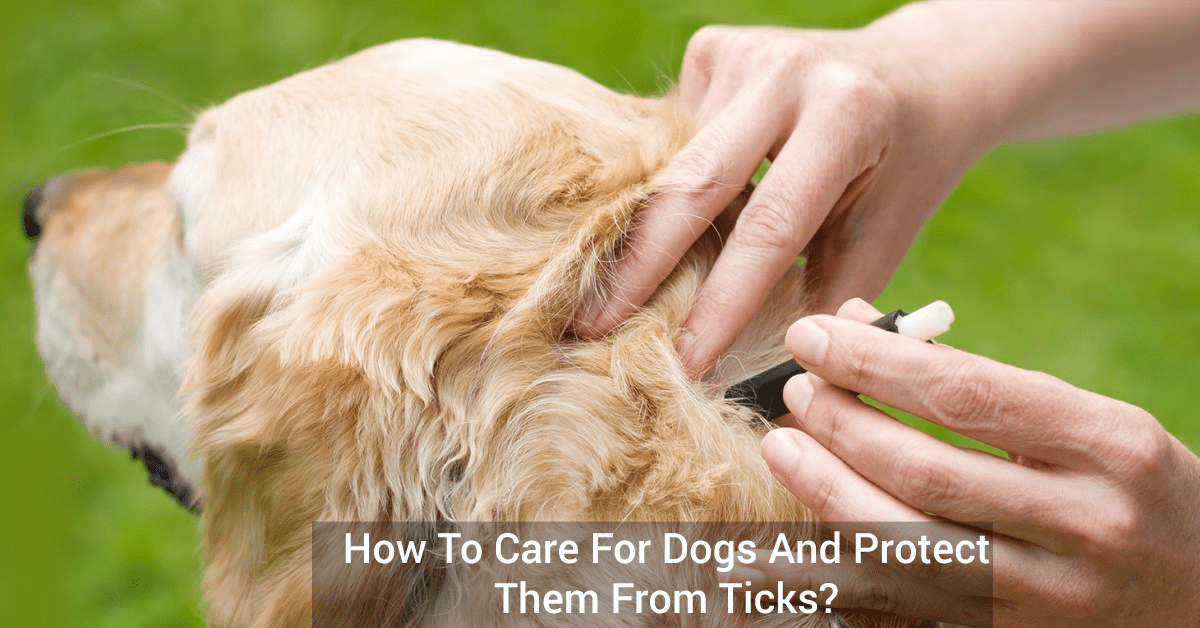In this blog, we explain about ticks, their effects on dogs, and what a dog owner can do to protect his beloved pet from this nasty insect.
There are insects in our surroundings that are so small that they cannot be easily detected with the naked eye. For us humans, the mosquito is one such insect that can do immense damage if allowed to breed and fester. If a mosquito sits on our body, we can see it and swat it away or kill it with our hands or an electric bat. Unfortunately, your dog can’t see an insect that hides in the fur or kill it. A dog needs all the help from you to get rid of harmful insects.
About Ticks
Tick is one ectoparasite that can cause a lot of damage to your dog. Ticks are blood-sucking parasites that take dogs and certain other animals as hosts. They hide easily in the fur of the animals where they cannot be easily detected. They are only as tiny as an orange pip and come in various colours. Once they feed on the blood, they swell up.
Ticks are usually found in grass, in thick bushes, or on other animals. Ticks thrive in warm weather. India, being a warm country, has its fair share of ticks. In India, there is no shortage of stray dogs and cattle. As dogs get more involved with these stray animals, there are high chances of getting infected by ticks.
Effects of ticks on dogs
In a dog’s body, ticks are usually found in various parts like:
- inside and around the ears
- around the eyes
- below the collar
- under the front legs
- between the hind legs
- between the toes
- around the tail
These are the body parts where there is less fur, which helps the tick get direct access to the skin to suck blood.
If a tick bite infection enters the dog’s bloodstream, it can cause diseases like Lyme disease or tick paralysis. Some of the symptoms of these diseases are noticeable limp, fever, rashes and swelling over the dog’s body, fatigue, or loss of energy, etc.
What can a dog owner do?
With good professional help and some smart moves, you can prevent the menace of ticks as a dog owner. Some of the steps relate to the dog itself, and others are for the surroundings.
Tips for dog care:
- Take care of your dog as a child in the family. Pay good attention to the behaviour of your dog. For example, if its skin is sore and itchy or if it is losing appetite, or if there is a change in barking voice, you are probably looking at the onset of a tick-borne disease.
- Have a check-up for your dog with a veterinarian regularly.
- Follow the vet’s advice and administer the necessary vaccination to prevent Lyme disease or other diseases.
- Check for ticks on your dog daily. You can do that by running your hand over the fur and inspecting the most infection-prone areas of a dog’s body. If you find a bump in the fur, it’s most likely a tick!
- If you find a tick, remove it. You can do so by using tweezers. Grab the mouthpart of a tick with a tweezer, twist, and pull slowly. Don’t squeeze the tick; else, it may explode. There will also be a ‘tick hook’ available with vets, which you can use to remove ticks. After removing the ticks, the skin should heal itself. You can consult the vet about it.
- Other products like tick collars, tablets, shampoo, or spot-on products can kill or repel ticks. Use these upon the advice of a vet.
Tips for the surroundings:
- Ensure that the surroundings are clean. For example, mow the grass regularly in your garden. Trim the bushes and cut the weeds to prevent ticks from growing there. If you find ticks in a public park or garden, avoid walking your dog there. It is not 100% possible to prevent a dog from going outdoors, but a dog owner can do what is possible.
- Clean the dog’s kennel and bed regularly to prevent all traces of ticks.
- Ensure that your pet dog doesn’t contact other stray dogs, cattle, or house cats in India. Stray dogs are often attracted to well-groomed pet dogs. Keep them apart.
- If you have a pet cat, don’t give your dog any medicine that is meant for the cat. That can be dangerous.
Conclusion
Ticks can create big problems for the dog and its owner. They are a dog’s greatest enemy. But by following professional advice and practical hygiene measures mentioned before, they can be overcome.

